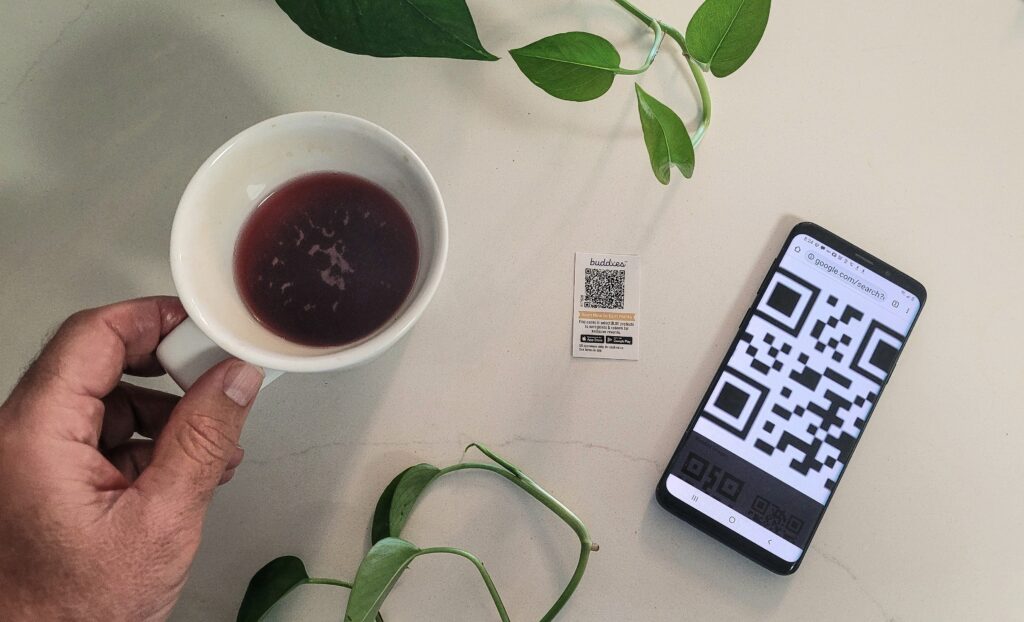QR Codes, standing for “Quick Response Codes,” are two-dimensional barcodes that have become integral to our digital age.
Originating in Japan in 1994, they’ve become ubiquitous, providing fast, efficient connections between the physical and digital worlds.
These codes hold significance in modern society as facilitators of swift information retrieval and interaction. They’ve transformed the way we connect and exchange information. These codes can store a wide range of information, from URLs to text data, making them versatile tools in various sectors.
There are different code types catering to diverse needs. These include URL, Text, Email, Phone Number, and SMS types, each serving distinct purposes. The type selected can influence the code’s utility and lifespan, making it essential to understand their differences and appropriate uses.
The QR Code Lifespan
The longevity of this code is multifaceted, resting on multiple factors. QR codes technically possess an indefinite lifespan. Once created, they continue to exist and are scannable. However, their practical lifespan can be influenced by the functionality and relevance of the encoded information, as well as the physical condition of the code itself. The longevity of these codes is impacted by various factors including the durability of the medium they are printed on, the relevance and availability of the linked content, and external environmental conditions. Regular updates and maintenance are crucial to ensure the sustained functionality of QR codes.
QR Code Use Cases
QR codes have infiltrated multiple industries, demonstrating extensive adaptability. From healthcare to retail, these codes facilitate diverse applications like contactless payments, information retrieval, and inventory tracking. They enable businesses to streamline operations, reduce errors, and enhance user experiences. For instance, restaurants employ QR codes for menu access and ordering, while airlines use them for boarding passes, ensuring efficiency and reducing paper waste. These examples illustrate the tangible benefits and widespread applicability of these codes in real-world scenarios.
QR Code Types and Durability
QR code generator free offered by QRStuff boasts different durability levels and suitability for varied purposes. The durability of a QR code is largely dependent on its type and usage. For example, static codes linking to unchanging information may have a longer practical lifespan compared to dynamic codes which may need frequent updates. The durability is also linked to the physical conditions like exposure to weather if they are printed. Each type caters to unique needs. URL codes are optimal for web links, while Email codes are tailored for sending predefined emails. Selecting the appropriate type is paramount to maximizing the effectiveness and lifespan of a code.
QR Code Best Practices
To ensure QR codes fulfil their purpose effectively, adhering to best practices is crucial. Using high-quality materials for printing and ensuring the content linked is regularly updated are pivotal in creating long-lasting codes. Additionally, the considerations of environmental exposure and wear and tear are essential for maintaining scanability. Aligning the code type with the specific needs of the task ensures optimal functionality. For instance, utilizing URL codes for web links and SMS codes for sending predefined messages aids in maintaining relevance and effectiveness.
QR Codes in Marketing
In the marketing landscape, QR codes act as bridges between consumers and brands. These codes have revolutionized advertising by providing immediate access to product information, promotional content, and user interactions. They enable seamless customer journeys, enhancing engagements and conversions. They play a pivotal role in connecting consumers to brands’ social media profiles, like Instagram and Facebook. This fosters community building and enhances brand loyalty by establishing direct, engaging interactions with the audience.
QR Codes for Networking
In the realm of networking, QR codes are indispensable tools for sharing contacts and enhancing connections. Embedding these codes in business cards allows professionals to share contact information seamlessly, reducing the reliance on physical cards and promoting eco-friendly practices. By scanning the code, individuals can swiftly save contact details, enhancing the efficiency of networking and ensuring the longevity of professional connections.
Codes for Connectivity
QR codes simplify connectivity, especially in establishing Wi-Fi connections. Wi-Fi codes allow users to connect to networks without manually entering passwords, enhancing convenience and security. The utility and convenience of Wi-Fi QR codes are evident in public spaces and events where providing access to the network is essential, showcasing the diverse applicability of codes in connectivity scenarios.
QR Codes for Multimedia Content
Linking to multimedia content is another realm where these codes excel. QR codes can effortlessly link to YouTube videos, PDF files, and other multimedia content, enabling instant access and interactions. When utilized for such purposes, the lifespan of these codes is directly linked to the availability and relevance of the linked content, necessitating regular updates and maintenance to ensure continued functionality.
Future Trends in QR Codes
The future of QR codes is promising, with continuous relevance and evolving applications. The versatility and adaptability of QR codes signify their enduring relevance. Emerging trends indicate the expansion of these codes into novel applications, ensuring their sustained importance in the digital landscape.
- Future-Proof Your Compliance: What to Look for in 2025 - July 11, 2025
- How WordPress Is Evolving into an Enterprise Platform - July 11, 2025
- Advanced Tech Solutions For Managing Work Availability - April 14, 2025



